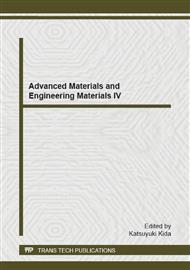p.399
p.403
p.408
p.412
p.416
p.420
p.424
p.429
p.433
Comparison of Bond Strength of Silicon-Silica and Silicon-Pyrex in Wafer Bonding
Abstract:
This paper reports on the bond strength comparison between silicon and different glass based materials via anodic bonding approach. The two types of glass based surface used were silica and pyrex. Silicon will be placed on the positive terminal and glass based materials will be placed on the negative terminal. Experiments were carried out using an in-house designed anodic bonder and the bond strength were measured using a bond strength tester. The anodic approach process was done in two sets which are before and after the cleaning process for each sample. For every set, there are three different bonding partners, which are silicon with silica, and silicon with Pyrex. From the results, it can be seen that almost all samples showed higher bond strength after the cleaning process. Silicon pyrex with bonding shows the highest bond strength compared to that with silicon-silica due to the presence of sodium ions. The effects of cleaning process with RCA towards the bond strength was also investigated.
Info:
Periodical:
Pages:
416-419
Citation:
Online since:
December 2014
Keywords:
Price:
Сopyright:
© 2015 Trans Tech Publications Ltd. All Rights Reserved
Share:
Citation:


